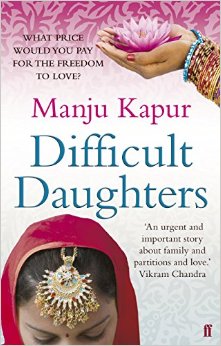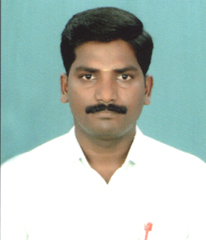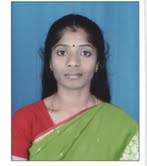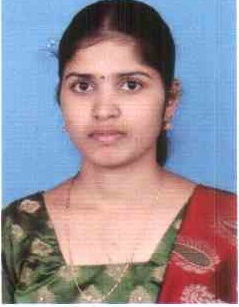Click Here for Back Issues of Language in India - From 2001
BOOKS FOR YOU TO READ AND DOWNLOAD FREE!
- FICTION FOR CHILDREN AND YOUNG ADULTS IN INDIA:
CRITICAL ESSAYS ... Dr. Shobha Ramaswamy, M.A., B.Ed., DCE, M.Phil., Ph.D. - OPINION OF THE HIGH SCHOOL TEACHERS ABOUT THE CANCELLATION OF THE SSLC EXAMINATION
M.Ed. Dissertation ... M. Raj Kumar, M.A., M.Ed. - SURVIVAL THROUGH REDEMPTION OF SELF IN THE SELECT NOVELS OF ALICE WALKER ... N. R. CHARRUMATHI, M.A.., M.Phil., Ph.D.
- Evil, Sin and Suffering in the Select Novels of Graham Greene ... Suma Aleya John, M.A., M.Phil., Ph.D.
- Images of Women in R. K. Narayan’s The Dark Room ... C. Malathi, M.A., M.Phil., NET, Ph.D. Candidate
- Error Analysis and Paragraph Writing ...
Ali Akbar Khansir, Ph.D.
Masomeh Ahrami, M.A. - ENGLISH AS A SECOND LANGUAGE -
PROFICIENCY ISSUES OF JAFFNA STUDENTS
(Prescribed as a Text Book for University Undergraduates) ... Dr. V. Suntharesan, Ph.D. - A Study of Elementary School Thai English Teachers' Perceived English Proficiency And Self Reported English Teaching Efficacy ... Barbara Best, MA TESOL
- IMPACT OF BORROWINGS FROM ENGLISH ON
JAFFNA TAMIL
(A Text Book For University Students) ... Dr. V. SUNTHARESAN, Ph.D. - An Exploratory Study into Factors Affecting Achievement in
English among Bangladeshi College Students:
An Investigation of Teachers and Students Perceptions ... Mohammad Mahbubur Rahman, M.A. in TESOL - The Role of Motivation in Teaching and Learning English as a Second Language at the Secondary Level ... Mosha. Afroza Sultana
- Teaching-Learning English Grammar Papers Presented in the 10th International Conference on English Grammar - Vol. 2 ... Editor: Dr. Vathana Fenn
- Teaching-Learning English Grammar Papers Presented in the 10th International Conference on English Grammar - Vol. 1 ... Editor: Dr. Vathana Fenn
- IMPEDIMENTS IN PROMOTING
COMMUNICATIVE COMPETENCE AMONG
STUDENTS OF ENGLISH AS A SECOND LANGUAGE ...
V. Suntharesan, Ph.D. - ARCHETYPES IN FANTASY FICTION: A STUDY OF J. R. R.TOLKIEN AND J. K. ROWLING ... Dr. Shobha Ramaswamy, M.A., B.Ed., DCE, M.Phil., Ph.D.
- Writing Problems among the Tertiary Level Students in Bangladesh: A Study in Chittagong Region ... Shakila Mustaque, M.A. in English and M.A. in ELT
- A Sociolinguistic Study of Social Stratification in Bangladesh and Its Impact on Academic Performance in English at Secondary Level Education ... Md. Abdur Rashid, M.A. in English and M.A. in ELT
- Sri Gidugu Venkata Ramamurti’s Life and His Works
Papers Read in the National Seminar to Celebrate the 150th Anniversary of G. V. Ramamurtigaru ... Chief Editor Dr. Pammi Pavan Kumar
Co-editor Dr. Banala Bhujanga Reddy
Honorary Editor Prof. S. Saratjyotsna Rani - The Impact of Teachers’ Beliefs on L2 Grammar Teaching ...
Nayyer Hassan, M.A. TESOL, M.S. TESOL - Tribal Languages of Kerala ...
Ravi Sankar S. Nair, Ph.D. - Teaching of Adverbials to the Tamil Speaking Learners of English ...
S. Rajendran - Drama in Indian Writing in English - Tradition and Modernity ...
Dr. (Mrs.) N. Velmani, Ph.D. - Representation of History in Rahi Masoom Reza’s A Village Divided and
Amitav Ghosh’s The Glass Palace
M.Phil. Dissertation ...
Imran A.K. Surti - Personality Style, Anxiety Sensitivity and Perceived
Social Support among the Pregnant Women
M.Phil. Dissertation in Clinical Psychology ...
Mangaleshwari Manjari. N. M.Sc., M.Phil. - Health and Medical Care Services: Claims on National
Resources ...
Editor: C. Subburaman, Ph.D. - An Investigation into Some of the Learning Problems in
English Language Writing among Lambada Community Learners
in Andhra Pradesh ...
N. Padmamma, M.Phil. - Teaching Writing Using Picture Stories as Tools at the High School Level: The Movement from Other Regulation to Self Regulation ...
Y. Nirmala, M.Phil. - Current Perspectives on Education ...
Editors: P. Udayakumar, M.Sc., M.Phil., M.Ed., M.A., Ph.D. Candidate
Dr. M. Lekeshmanaswamy, Ph.D.
Dr. K. Dhanalakshmi, Ph.D. - Acoustic Characteristics of Vowels in Telugu ...
Krishna. Y. - Mother – Daughter Relationships: A Study of The Dark Holds No Terrors, Difficult Daughters and Fasting, Feasting ...
Jitender Singh, M.A., M.Phil., NET. - Treatment of Violence: A Study of Morrison’s The Bluest Eye and Beloved
...
Shubhanku Kochar, M.Phil., Ph.D. Candidate - Dyslexia: A Critical Study of Language Deficiency in Children and Adolescents
...
Vaishali Narbheram Punjani, M.A., M.Phil. B.Ed. - Michael Ondaatje’s Anil’s Ghost and Vikram Chandra’s Sacred Games as Detective Fiction
...
S. Sridevi, M.A., M.Phil., B.Ed. - A Grammar of Malayalam ...
Ravi Sankar S Nair, Ph.D. - The Evolution of Language Laws in Post-Independence India ...
B. Mallikarjun, Ph.D. - Impact of Commercialization on Language with Special Reference to Urdu Lexicon - Doctoral Dissertation ... Somana Fatimah,Ph.D.
- Status of English among the Kokborok and Tripura Bangla Learners in Tripura - M.Phi. Dissertation ... Swapan Debnath, M.A., M.Phil., Ph.D.
- Communicative Language Teaching Approach at Higher Secondary Level in Bangladesh – Teachers’ Perceptions and Classroom Practice ... Md. Khaled Bin Chowdhury, M.A. (Double)
- A Study on Personality Factors Causing Stress among School Teachers
M.Phil. Dissertation ... C. Manjula, M.A., M.Phil., Ph.D. - English Language Teaching
Updating the English Classroom with Techniques and Communication Skills
A Book on Current ELT ... Chandrika Mohan, M.A., M.A., M.Phil., C.G.T., Ph.D. Candidate - A Song for the Road-
Wole Soyinka’s Imagery and Tradition ... V. N. Manjula, Ph.D. - A Linguistic Survey of Katta Varadaraju’s Dwipada Ramayanam
A Ph.D. Dissertation in Telugu ... Pammi Pavan Kumar, M.A. (Telugu) M.A. (Linguistics), M. Phil., Ph.D. (Telugu) - Select Speeches of Mrs. Indira Gandhi
English to Tamil
M.Phil. Dissertation ... J. Abiraami, M.A., M.Phil. - Linguistics and Literature, Department of Linguistics Silver Jubilee Volume 1 ... Editors: C. Sivashanmugam, Ph.D., et al.
- Recent Advances in Linguistics, Department of Linguistics Silver Jubilee Volume 2 ... Editors: C. Sivashanmugam, Ph.D., et al.
- Engineering English: A Critical Evaluation - Ph.D. Dissertation ... Albert P’Rayan, Ph.D.
- Kalidasa's Shakuntala and the Doctrine of Rasa ... Tripti Mund, M.A., M.Phil.
- Evolving Strategies for Teaching Basic Vocabulary in L2 through Meaningful Input: An Ethnographic Study with First Generation Learners ... Rajakumar Guduru, M.Phil., Ph.D. Scholar
- Aspects of Autobiography in Indian Writing in English ... Editors: Pauline Das, Ph.D., K. R. Vijaya Murari, Ph.D., and Charu Sheela, M.A., M.Phil., M.B.A.
- Imagery in Donne's Songs and Sonnets ... Fatima Ali al-Khamisi, M.A.
- Parsing in Indian Languages ... Editors: Kommaluri Vijayanand and L. Ramamoorthy
- English Language Teaching (ELT) in Saudi Arabia: A Study of Learners' Needs Analysis with Special Reference to Community College, Najran University ... Dr. Mohd. Mahib ur Rahman, Ph.D.
- Provision for Linguistic Diversity and Linguistic Minorities in India ... Vanishree V.M., MAPL and ELT, M.A., PGDHRM.
- Impact of Students' Attitudes on their Achievement in English: A Study in the Yemeni Context ... Hassan Saeed Awadh Ba-Udhan
- A Study of B.ED. Students' Attitude Towards Using Internet in Vellore District, Tamilnadu, India ... T. Pushpanathan, M.A., M.Phil., B.Ed.
- Development of a Hindi to Punjabi Machine Translation System, A Doctoral Dissertation ... Vishal Goyal, Ph.D.
- A Report on the State of Urdu Literacy in India, 2010 ...
Omar Khalidi, Ph.D. - English for Medical Students of Hodeidah University, Yemen - A Pre-sessional Course ...
Arif Ahmed Mohammed Hassan Al-Ahdal, Ph.D. Scholar - Global Perspective of Teaching English Literature in Higher Education in Pakistan ...
Rabiah Rustam, M.S., Ph.D. Candidate - Improving Chemmozhi Learning and Teaching - Descriptive Studies in Classical-Modern Tamil Grammar ...
A. Boologa Rambai, Ph.D. - A Phonetic and Phonological Study of the Consonants of English and Arabic ... Abdulghani A. Al-Hattami, Ph.D. Candidate
- Some Aspects of Teaching-Learning English as a Second Language ...
R. Krishnaveni, M.A., M.Sc., M.Phil., Ph.D. Candidate - The Influence of First Language Grammar (L1) on the English Language (L2) Writing of Tamil School Students: A Case Study from Malaysia ...
Mahendran Maniam, Ph.D. (ESL) - Economics of Crime : A Comparative Analysis of the Socio-Economic Conditions of Convicted Female and Male Criminality In Selected Prisons in Tamil Nadu ...
S. Santhanalakshmi, Ph.D. - Technique as Voyage of Discovery: A Study of the Techniques in Dante's Paradiso ...
Raji Narasimhan, M.A. - A Critical Study of The Wasteland - Poetry as Metaphor ...
K. R. Vijaya, M.A., M.Phil. - Language and Literature: An Exposition - Papers Presented in the Karunya University National Seminar ... Editor: J. Sundar Singh, Ph.D.
- Linguistic Purism and Language Planning in a Multilingual Context ...
L. Ramamoorthy, Ph.D. - Papers Presented in the All-India Conference on Multimedia Enhanced Language Teaching - MELT 2009 ...
L. Ramamoorthy, Ph.D. and J.R. Nirmala, Ph.D. - A Phonological Study of Variety of English Spoken by Oriya Speakers in Western Orissa - A Doctoral Dissertation ... Arun K. Behera, Ph.D.
- Phonological Analysis of English Phonotactics of Syllable Initial and Final Consonant Clusters by Yemeni Speakers of English ... Abdulghani. M. A. Al-Shuaibi, M.A.
- Journey of Self-discovery in Anita Nair's Ladies' Coupé ... V. Chandra, M.A.
- The Literary Value of the Book of Isaiah ... Helen Unius Backiavathy, M.A.,M.Phil., Ph.D. Candidate
- A Study of Structural Duplication in Tamil and Telugu - A Doctoral Dissertation ... Parimalagantham, Ph.D.
- The Politics of Survival in the Novels of Margaret Atwood ... Pauline Das, Ph.D.
- Nonverbal Communication in Tamil Novels - A Book in Tamil ...
M. S. Thirumalai, Ph.D. - A Study of English Loan Words in Selected Bahasa Melayu Newspaper Articles...
Shamimah Binti Haja Mohideen, M.HSc. (TESL) - The Internal Landscape and the Existential Agony of Women in Anjana Appachana's Novel LISTENING NOW, A Doctoral Dissertation ...
M. Poonkodi, Ph.D. - Trade in the Madras Presidency, 1941 - 1947 - A Doctoral Dissertation ...
R. Jayasurya, Ph.D. - Trends and Spatial Patterns of Crime in India - A Case Study of a District in India ...
M. Jayamala, Ph.D. - The Trading Community in Early Tamil Society Up To 900 AD ...
R. Jeyasurya, M.A., M.Phil., Ph.D. - A Study of Auxiliaries in the Old and the Middle Tamil ...
A.Boologarambai, M.A., Ph.D. - History of Growth and Reforms of British Military Administration in India, 1848-1949 ...
Hemalatha, M.A., M.Phil. - Language of Mass Media: A Study Based on Malayalam Broadcasts - A Doctoral Dissertation
K. Parameswaran, Ph.D. - Form and Function of Disorders in Verbal Narratives - A Doctoral Dissertation ...
Kandala Srinivasacharya, Ph.D. - Status Marking in Tamil - A Ph.D. Dissertation
P. Perumalsamy, Ph.D. - LANGUAGE AND POWER IN COMMUNICATION ...
Editors: Jennifer M. Bayer, Ph.D., and Pushpa Pai, Ph.D. - Onomatopoeia in Tamil ...
V. Gnanasundaram, Ph.D. - Linguistics and Literature ...
C.Shunmugom, Ph.D., and C. Sivashanmugam, Ph.D., V. Thayalan, Ph.D. and C. Sivakumar, Ph.D. (Editors) - Translation: New Dimensions ...
C.Shunmugom, Ph.D., and C. Sivashanmugam, Ph.D., Editors - Language of Headlines in Kannada Dailies ...
M. N. Leelavathi, Ph.D. - Cooperative Learning Incorporating Computer-Mediated Communication: Participation, Perceptions, and Learning Outcomes in a Deaf Education Classroom ...
Michelle Pandian, M.S. - The Effects of Age on the Ability to Learn English As a Second Language ... Mariam Dadabhai, B.A. Hons.
- A STUDY OF THE SKILLS OF READING COMPREHENSION IN ENGLISH DEVELOPED BY STUDENTS OF STANDARD IX IN THE SCHOOLS IN TUTICORIN DISTRICT, TAMILNADU ...
A. Joycilin Shermila, Ph.D. - A Socio-Pragmatic Comparative Study of Ostensible Invitations in English and Farsi ...
Mohammad Ali Salmani-Nodoushan, Ph.D. - TEXT FAMILIARITY, READING TASKS, AND ESP TEST PERFORMANCE: A STUDY ON IRANIAN LEP AND NON-LEP UNIVERSITY STUDENTS - A DOCTORAL DISSERTATION ...
Mohammad Ali Salmani-Nodoushan, Ph.D. - A STUDY ON THE LEARNING PROCESS OF ENGLISH
BY HIGHER SECONDARY STUDENTS
WITH SPECIAL REFERENCE TO DHARMAPURI DISTRICT IN TAMILNADU
K. Chidambaram, Ph.D. - SPEAKING STRATEGIES TO OVERCOME COMMUNICATION DIFFICULTIES IN THE TARGET LANGUAGE SITUATION - BANGLADESHIS IN NEW ZEALAND ...
Harunur Rashid Khan - THE PROBLEMS IN LEARNING MODAL AUXILIARY VERBS IN ENGLISH AT HIGH SCHOOL LEVEL ...
Chandra Bose, Ph.D. Candidate - THE ROLE OF VISION IN LANGUAGE LEARNING in Children with Moderate to Severe Disabilities ...
Martha Louise Low, Ph.D. - SANSKRIT TO ENGLISH TRANSLATOR ...
S. Aparna, M.Sc. - A LINGUISTIC STUDY OF ENGLISH LANGUAGE CURRICULUM AT THE SECONDARY LEVEL IN BANGLADESH - A COMMUNICATIVE APPROACH TO CURRICULUM DEVELOPMENT by
Kamrul Hasan, Ph.D. - COMMUNICATION VIA EYE AND FACE in Indian Contexts by M. S. Thirumalai, Ph.D.
- COMMUNICATION VIA GESTURE - Indian Contexts by
M. S. Thirumalai, Ph.D. - CIEFL Occasional Papers in Linguistics, Vol. 10
- Language Acquisition, Thought and Disorder - Some Classic Positions by
M. S. Thirumalai, Ph.D. - English in India: Loyalty and Attitudes by
Annika Hohenthal - Language In Science by
M. S. Thirumalai, Ph.D. - Vocabulary Education by
B. Mallikarjun, Ph.D. - A Contrastive Analysis of Hindi and Malayalam by
V. Geethakumary, Ph.D. - Language of Advertisements in Tamil Mass Media by
Sandhya Nayak, Ph.D. - An Introduction to TESOL: Teaching English to Speakers of Other Languages by
M. S. Thirumalai, Ph.D. - Transformation of Natural Language into Indexing Language: Kannada - A Case Study by B. A. Sharada, Ph.D.
- How to Learn Another Language? by M.S.Thirumalai, Ph.D.
- Verbal Communication with CP Children by Shyamala Chengappa, Ph.D. and M.S.Thirumalai, Ph.D.
- Bringing Order to Linguistic Diversity - Language Planning in the British Raj by
Ranjit Singh Rangila,
M. S. Thirumalai,
and B. Mallikarjun
Girish Karnad as a Modern Indian Dramatist - A Study ...
B. Reena, M.A., M.Phil.
REFERENCE MATERIALS
- CENSUS OF INDIA 2011 General Data
- CENSUS OF INDIA 2011 DATA ON DISABILITY
- Action Plan of Centre for Classical Kannada
- UNIVERSAL DECLARATION OF LINGUISTIC RIGHTS
- Lord Macaulay and
His Minute on
Indian Education - In Defense of
Indian Vernaculars
Against
Lord Macaulay's Minute
By A Contemporary of
Lord Macaulay - Languages of India,
Census of India 1991 - The Constitution of India:
Provisions Relating to
Languages - The Official
Languages Act, 1963
(As Amended 1967) - Mother Tongues of India,
According to
1961 Census of India
BACK ISSUES
- E-mail your articles and book-length reports in Microsoft Word to languageinindiaUSA@gmail.com.
- PLEASE READ THE GUIDELINES GIVEN IN HOME PAGE IMMEDIATELY AFTER THE LIST OF CONTENTS.
- Your articles and book-length reports should be written following the APA, MLA, LSA, or IJDL Stylesheet.
- The Editorial Board has the right to accept, reject, or suggest modifications to the articles submitted for publication, and to make suitable stylistic adjustments. High quality, academic integrity, ethics and morals are
expected from the authors and discussants.
Copyright © 2015
M. S. Thirumalai
Custom Search
Portrayal of Matriarchal Perception in Manju Kapur’s
Difficult Daughters
V. M. Manju, M.A., Dr. C. Govindaraj and R. Lissy, M.A., M.Phil., M.Ed.

Abstract
Indian Society is bound by duties and responsibilities which are a part and parcel of the country’s culture. As India is a place of different cultures, there are certain traditions which are followed by Indians in an astute manner. Manju Kapur, in her novel Difficult Daughters, has portrayed the traditional women of India. Here, she has presented women belonging to three generations. Kasturi follows the tradition by marrying and bearing eleven children and she expects the same from her first daughter Virmati. But Virmati prefers the road which is less traveled. She begins to value education and higher things in life against her parent’s wish. The novel is also successful in presenting clearly the abuse that the women face at the hands of society. She wishes to pursue education for herself for which she pays a high price by falling in love with the professor. She finds no meaning in following the tradition or culture that she was born in. She struggles to get what she wants. Though she breaks Indian values in her time, she also follows tradition with her daughter Ida’s arrival. She follows the same interfering in Ida’s life just as her mother Kasturi had insisted she must do certain things in her life. But Ida goes a step further. She divorces her husband and is determined to remain single. Thus, in the novel all the women characters want to change their daughters’ lives by asking them to follow age old traditions.
Key words: Manju Kapur’s novels, Traditional Women, Difficult Daughters
Tradition and Culture
Tradition and culture are the expressions of the ways of living developed by a community and passed on from generation to generation, including beliefs, customs, practices, and values. In Indian culture and tradition, and concepts of rituals, there have been often alien ideas as far as women are concerned. Indian women are considered as the moral nucleus of the family, and yet one can see how the traditions also contrived to demean the women, making them the downtrodden ones, abused by the patriarchal society.
Manju Kapur’s Depiction of Indian Thoughts and Traditions
Indian English creative writers describe the Indian traditional values in their works. Among them Manju Kapur is excellent in her special depiction of Indian thoughts and traditions. The people of the present century also follow most of the conventions and customs. The real impact of Indian social-cultural traditions is echoed in the religious spiritual ideas that are portrayed as part and parcel of the life of Indian women. The novel Difficult Daughters explores the dark reality of tradition, prevailing customs particularly close to the Indian women who follow the age-old rotten ideas and traditions in their day to day lives.
V. M. Manju, M.A.
PG & Research Department of English
Sri Vidya Mandir Arts & Science College
Katteri, Uthangarai – 636902
Krishnagiri District
Tamilnadu
India
manjuvm92@gmail.com

Assistant Professor & Head of the Undergraduate Section
PG & Research Department of English
Sri Vidya Mandir Arts & Science College
Katteri, Uthangarai – 636902
Krishnagiri District, Tamilnadu, India
govindlissy@gmail.com

Assistant Professor
PG & Research Department of English
Sri Vidya Mandir Arts & Science College
Katteri, Uthangarai – 636902
Krishnagiri District, Tamilnadu, India
govindlissy@gmail.com
- Click Here to Access All the Papers of May 2015 Issue.
- Click Here for the PRINT VERSION OF ALL THE PAPERS OF MAY 2015 ISSUE IN BOOK FORMAT.
- Click Here for Back Issues of Language in India
- Click Here for the HOME PAGE of Language in India
- CONTACT EDITOR languageinindiaUSA@gmail.com
Custom Search
- Click Here to Go to Creative Writing Section
- Send your articles
as an attachment
to your e-mail to
languageinindiaUSA@gmail.com. - Please ensure that your name, academic degrees, institutional affiliation and institutional address, and your e-mail address are all given in the first page of your article. Also include a declaration that your article or work submitted for publication in LANGUAGE IN INDIA is an original work by you and that you have duly acknowledged the work or works of others you used in writing your articles, etc. Remember that by maintaining academic integrity we not only do the right thing but also help the growth, development and recognition of Indian/South Asian scholarship.


